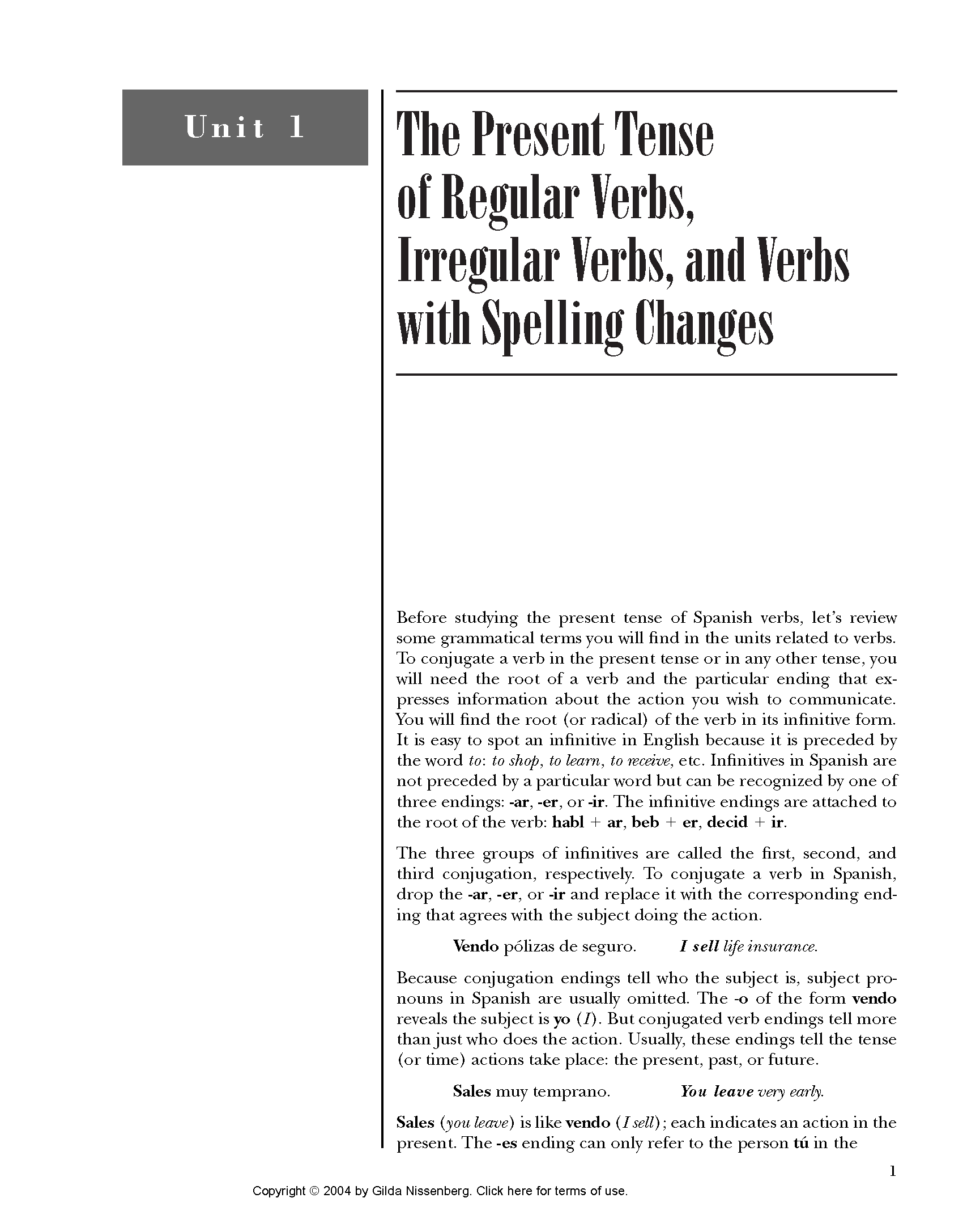CSG012

Unit 1
The Present Tense of Re«n lar Verbs, Irregular Verbs, and Verbs with Spelling Changes
Before studying the present tense of Spanish verbs, let’s review some grammatical terms you will find in the units related to verbs. To conjugate a verb in the present tense or in any other tense, you will need the root of a verb and the particular ending that ex~ presses information about the action you wish to communicate. You will find the root (or radical) of the verb in its infinitive form. It is easy to spot an infinitive in English because it is preceded by the word to: to shop, to learn, to recehue, etc. Infinitives in Spanish are not preceded by a particular word but can be recognized by one of three endings: -ar, -er, or -ir. The infinitive endings are attached to the root of the verb: habl + ar, beb + er, decid + ir.
The three groups of infinitives are called the first, second, and third conjugation, respectively. To conjugate a verb in Spanish, drop the -ar, -er, or -ir and replace it with the corresponding ending that agrees with the subject doing the action.
Vendo pólizas de seguro. I sell life Insurance.
Because conjugation endings tell who the subject is, subject pro-nouns in Spanish are usually omitted. The -o of the form vendo reveals the subject is yo (/). But conjugated verb endings tell morę thanjust who does the action. Usually, these endings tell the tense (or time) actions take place: the present, past, or futurę.
Sales muy temprano. You leave very early.
Sales (you leave) is like vendo (Isell); each indicates an action in the present. The -es ending can only refer to the person tu in the
Copyright © 2004 by Giida Nissenberg. Ciick here for terms of use.
1
Wyszukiwarka
Podobne podstrony:
CSG352 Answer Key Unit 1 The Present Tense of Regular Verbs, Irregular Verbs, and Verbs with Spellin
CSG020 9 The Present Tense of Regular Yerbs, Irregular Yerbs, and Yerbs with Spelling Changes 4. &nb
CSG024 13 The Present Tense of Regular Yerbs, Irregular Yerbs, and Yerbs with Spelling Changes • Yer
CSG028 17 The Present Tense of Regular Verbs, Irregular Verbs, and Verbs with Spelling Changes 7.
CSG014 3 The Present Tense of Regular Verbs, Irregular Verbs, and Yerbs with Spelling Changes Some c
więcej podobnych podstron